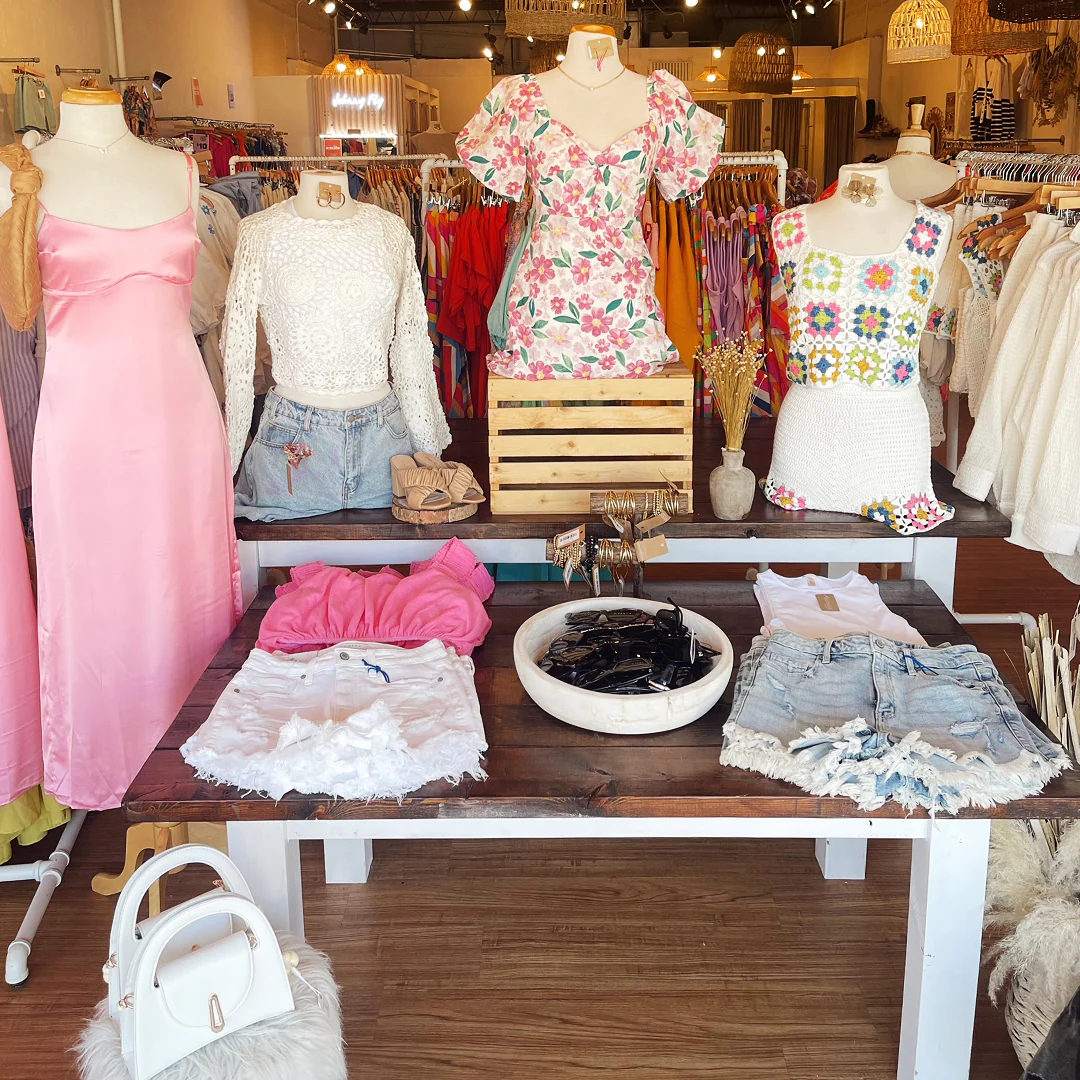Boost Your Closet with Stunning Boutique Fashion Essentials
Boost Your Closet with Stunning Boutique Fashion Essentials
Blog Article
Lasting Fashion: Just How Eco-Friendly Clothing Is Shaping the Future of Style
As the fashion business encounters raising scrutiny over its environmental impact, the rise of sustainable fashion provides an appealing option that lines up design with environmental duty. Using ingenious materials such as recycled fibers and plant-based textiles, alongside advanced methods like digital and 3D printing, designers are redefining what it means to be stylish in the modern age. Concurrently, the expanding appeal of upcycling and second hand society is promoting a change in the direction of a round economic climate. Yet, exactly how does this motion really influence the future trajectory of fashion, and what challenges exist in advance in its extensive adoption?
Innovative Lasting Materials
As the style industry grapples with its environmental influence, innovative sustainable products have actually arised as a vital remedy for reducing environmental impacts. These products not just reduce reliance on fossil gas but likewise lessen harmful pesticide usage and water intake.
Along with plant-based materials, developments in biofabrication have resulted in the development of lab-grown textiles. Mycelium leather, derived from mushroom roots, presents a biodegradable and versatile option to animal leather. Its manufacturing causes substantially reduced carbon discharges and water usage, making it a more sustainable option for style developers looking for to straighten with green techniques.
Recycled products are likewise acquiring traction, with polyester made from recycled plastic containers standing for a substantial development. This innovation not only diverts plastic waste from landfills and oceans yet additionally minimizes power consumption compared to generating virgin polyester. With each other, these materials emphasize the capacity for a more lasting apparel industry, leading the way for environmentally aware style and production.
Eco-Conscious Production
Building on the advancements in lasting materials, the style sector is also re-evaluating its production procedures to further minimize ecological impact. Secret approaches include reducing water usage, lowering carbon emissions, and getting rid of harmful chemicals.
An additional vital facet is the decrease of toxic chemicals typically utilized in coloring and ending up fabrics. Eco-conscious manufacturers are shifting towards plant-based dyes and waterless dyeing innovations, which not just secure neighborhood environments yet likewise enhance worker safety. Developments like digital printing minimize textile waste and power consumption, using a cleaner choice to traditional methods.
Furthermore, transparency and traceability have become critical. With the innovation of blockchain modern technology, firms can currently give thorough understandings right into their supply chains, making certain ecologically friendly and ethical techniques at each action. This openness develops consumer trust fund and urges brand names to preserve high sustainability standards. As the demand for eco-conscious items expands, producers are obliged to introduce, making certain that the future of style is both lasting and elegant.
The Surge of Upcycling
Upcycling, a transformative practice in lasting fashion, entails creatively repurposing thrown out materials into new, high-grade products. This cutting-edge technique not only minimizes waste but likewise diminishes the need for basic materials, consequently this website lessening the ecological influence of clothes manufacturing. By reimagining and reconstructing existing items, designers and style brand names are able to instill creativity into their collections while promoting ecological responsibility.

Furthermore, the upcycling movement has actually encouraged independent developers and little companies, that usually lead in advancement because of their agility and creative thinking. By maximizing the plentiful availability of extra products, these entities contribute to a round economic climate, showing that fashion can be both stylish and lasting. With upcycling, the sector site link takes considerable strides towards a much more conscious and liable future.
Thrift Society's Impact
The expanding thrift society considerably improves the landscape of sustainable style, emphasizing the value of conscious usage. This social shift motivates customers to embrace secondhand clothes, thereby lowering the demand for new garment manufacturing and reducing environmental influence. Thrift buying not just extends the lifecycle of garments yet also reduces the carbon impact associated with production, transporting, and taking care of apparel.
An essential facet of second hand culture is its democratization of fashion. By using a wide range of styles from numerous periods at economical rates, second hand shops make style available to a wider target market. This access fosters a sense of individuality and imagination, as consumers mix and match unique items to curate individualized closets without adding to the fast fashion cycle.
Additionally, second hand society advertises circularity in vogue, lining up with the concepts of a round economic climate. By recirculating garments, the cycle of waste is interrupted, and sources are saved. This method supports a shift from a linear "take-make-dispose" model to a more sustainable framework. As even more customers and developers embrace thrift society, the garment industry is forced to adjust, integrating sustainable practices to fulfill the expanding need for eco-conscious click here to read options.

Future Trends in Style
Fashion's development is significantly formed by sustainability-driven campaigns and technological developments. One famous fad is the surge of digital fashion, where virtual garments can be used in enhanced fact settings, significantly decreasing material waste.
Additionally, the assimilation of blockchain modern technology supplies brand-new opportunities in openness and traceability, permitting customers to validate the sustainability qualifications of their clothing. boutique fashion. This ensures accountability in supply chains and promotes ethical sourcing practices. 3D printing is yet another development that promises to revolutionize manufacturing processes by enabling on-demand manufacturing, therefore lowering excess supply and waste
As these technologies mature, they are positioned to transform the style landscape, combining style with sustainability. The future of style, as a result, lies in a smooth blend of technology, technology, and environmental responsibility.
Verdict
The change of the apparel industry with sustainable practices suggests a pivotal shift in the direction of environmental accountability. The assimilation of ingenious products, eco-conscious manufacturing strategies, and the embracement of upcycling and thrift society underscores a dedication to decreasing eco-friendly footprints. As these techniques acquire energy, they redefine the industry's story by focusing on sustainable and honest choices. This advancement not only lines up style with ecological sustainability yet also sets a criterion for future trends focused on duty and development.
As the fashion market encounters increasing scrutiny over its environmental effect, the surge of lasting style offers a promising option that lines up style with environmental duty.As the style sector grapples with its ecological influence, innovative sustainable materials have emerged as a vital option for lowering eco-friendly impacts. With each other, these products emphasize the possibility for an extra lasting fashion market, paving the way for environmentally conscious design and production.
Structure on the innovations in lasting products, the style market is likewise re-evaluating its manufacturing processes to better lower environmental influence. boutique fashion.Upcycling, a transformative practice in lasting style, involves artistically repurposing thrown out materials right into brand-new, top quality items
Report this page